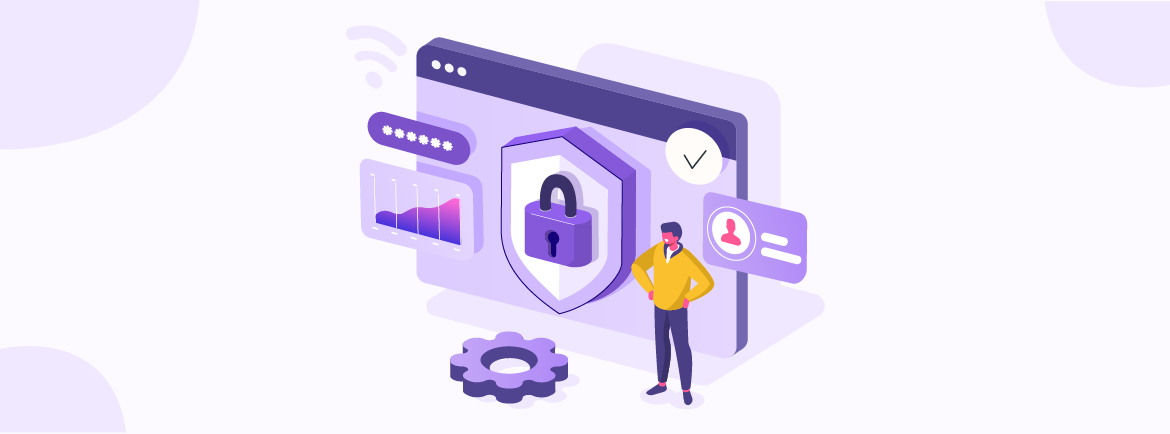Using Advanced Firewall Features and Other Technologies to Strengthen Network Security

A traditional firewall can only do so much to protect a network against the invasive security threats that financial institutions are facing. Add to that, cybercriminals are becoming more sophisticated and creative with their schemes, meaning banks and credit unions need more advanced defensive measures in place.
Malware and other cyber threats have been steadily increasing—especially against financial institutions, which are 300 times more likely than other companies to be targeted by a cyberattack, according to research by Boston Consulting Group. Institutions can capitalize on next-generation firewall (NGFW) features and other advanced technologies to increase the likelihood of warding off attacks, including:
Antimalware Scanning
Malware is intentionally designed for a perverse purpose: to damage a computer, server, client, or computer network. To keep malware at bay, banks and credit unions can use antimalware to thoroughly scan their computer network and detect and remove malicious ransomware, spyware, and other software that might be lurking on the system. Taking this proactive step can help institutions keep their network from being damaged, disrupted or compromised and overall improve the delivery of their services in a safe and secure manner.
Dynamic Threat Feeds
Threat intelligence data feeds can provide institutions with constantly updated information about potential sources of attack. Industry-specific feeds deliver up-to-date information on the latest security threats in the banking industry. Dynamic threat feeds make it easy for institutions to permit “good” network traffic in and “bad” traffic out while ensuring critical processes continue to work.
Dynamic threat feeds, essentially, take valuable parts of the information related to establishing connections and find similarities within them to act on potential or current threats. A key type of threat intelligence feed that institutions can implement are GEO-IP threat feeds. With this technology, a bank can map an IP address to the geographic location of an Internet-connected computing device. Then, they can analyze the Geo-IP data to detect threats from high-risk locations to improve their security posture. This analysis can be accomplished with processing times equal to less than a few milliseconds.
Another effective threat feed that institutions can use is IBM X-Force Exchange. This cloud-based threat intelligence platform allows banks to consume, share, and act on a variety of threat intelligences. IBM X-Force enables users to quickly research the latest security threats, gather actionable intelligence, consult with experts, and collaborate with peers. They can also integrate other tools to facilitate configuring feeds, providing a major benefit for smaller institutions with fewer resources. With dynamic threat feeds, banks and credit unions can have greater peace of mind with their firewall and security posture.
TLS/SSL Inspection
NGFWs offer capabilities that go beyond traditional firewalls, including inspecting TLS/SSL encrypted traffic. TLS/SSL technology helps protect online traffic; it creates an encrypted link between a web server and browser, ensuring the privacy of the data being transmitted. TLS/SSL inspection is important because it allows firewalls to scrutinize this encrypted web traffic and close holes in security. These security gaps could be exploited by would-be cybercriminals who attempt to use encrypted traffic for malware to circumvent the firewall’s inspections.
TLS/SSL traffic inspection allows institutions to decrypt traffic, inspect the decrypted payload for threats, then re-encrypt the traffic before it enters or leaves the network. Such deep content inspection can better protect institutions from internal and external risks. This makes TLS/SSL inspection the ideal defensive weapon against menacing malware and other security issues.
Sandboxing
Sandboxing can also help institutions augment their network security efforts. Traditional firewalls evaluate traffic based on static factors like where it originated, it is destination going, and the port being used. However, these are no longer sufficient for combating modern security threats. Sandboxing—physically or virtually segmenting a system, network, or entire environment—creates a secure location to test and neutralize potential hazards. Having a safe space to “detonate” payloads for analysis results in less risk and damage to the production environment, and, ultimately, enhances network security.
For more information about using advanced firewall features and other technology to strengthen network security, read our “Improving Security Posture Through Next-Generation Firewall Features” white paper.

